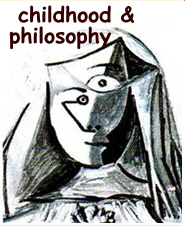playing with words. the language and the mysthic between wittgenstein and p4c: what is the relationship?
Keywords:
Parole chiave, filosofia per bambini, Wittgenstein, linguaggioAbstract
The text starts with an introductory note in which the author, who has already used the curriculum she will discuss, clarifies her didactic choices in two ways. Her primary motivation was 1) to assist in the dynamic and multi-dimensional growth of her students’ individual and collective thinking, and of her thinking as well; and, 2) to give them the tools through which they could reach their own potential through continual transformation and renovation of both their individual and social lives. The text begins with the philosophical statements which a group of children have offered in the course a session, which the author connects to the thinking of Wittgenstein, which leads into an inquiry about the relationship between the thinking of the Austrian philosopher and Matthew Lipman. Basic shared themes and analogous approaches are identified in the areas of mysticism, language, and the goals of philosophy. Lipman says, for example, that "Philosophy for Children aims at being a total, thinking-inlanguage experience,"2while for Wittgenstein, philosophy is an activity of clarification through language whose purpose is to make thoughts clear via logic. In his Philosophical Investigations, for example, language is understood as a unitary structure that represents a set of relationships, just as in the community of inquiry, dialogue is understood as a set of relationships between multiple meanings. For both philosophers, language restores the relationship between theory and practice, and as such is a social production and an instrument for the transformation of daily behavior. The therapeutic potential that Wittgenstein finds in language can be compared to the potential for reconstruction that the community of inquiry explores through its practice of collective action-research into the construction of meaning and value in everyday life. The capacity for wonder that Lipman attributes to children is seen in relation to Wittgenstein's concern for "what cannot be said," and is understood in both philosophers as the exploration of that mystery which serves as the ground on which and by which everything that we strive to express, to communicate, and to be, acquires a meaning.Downloads
Download data is not yet available.
Downloads
Published
2010-02-02
Issue
Section
articles




